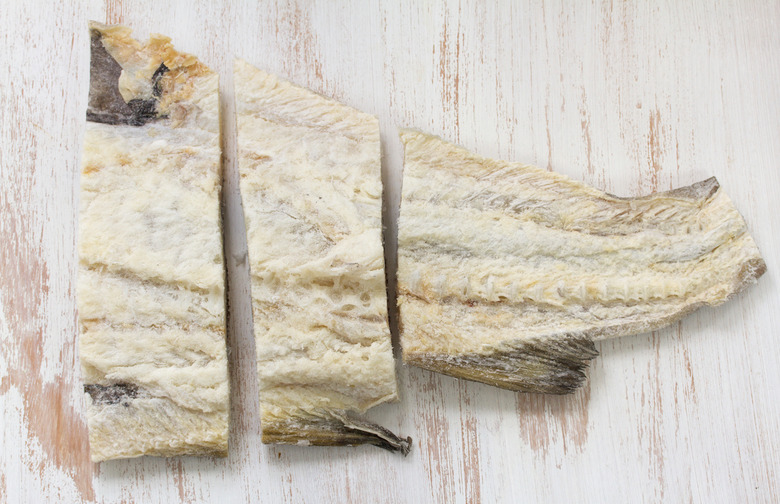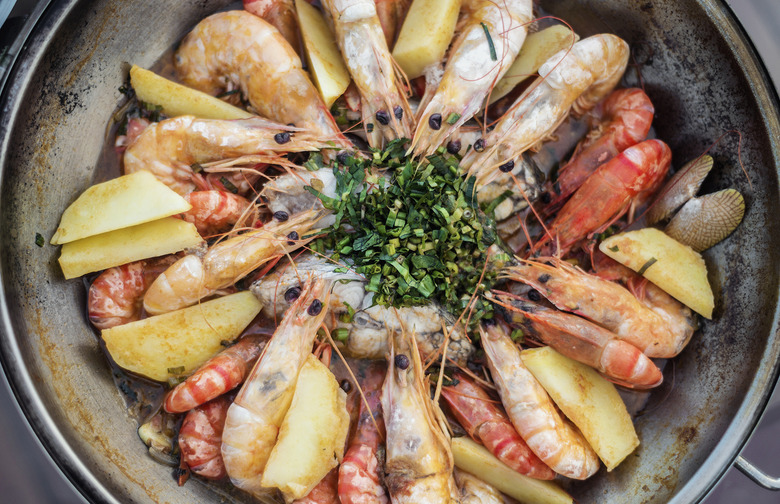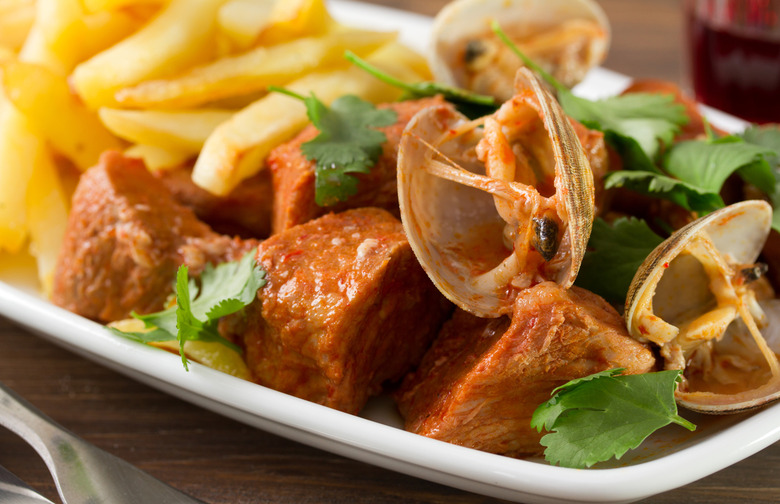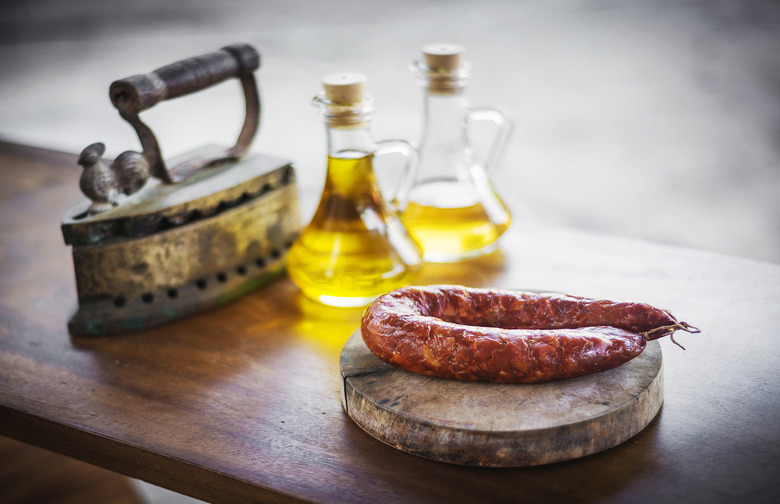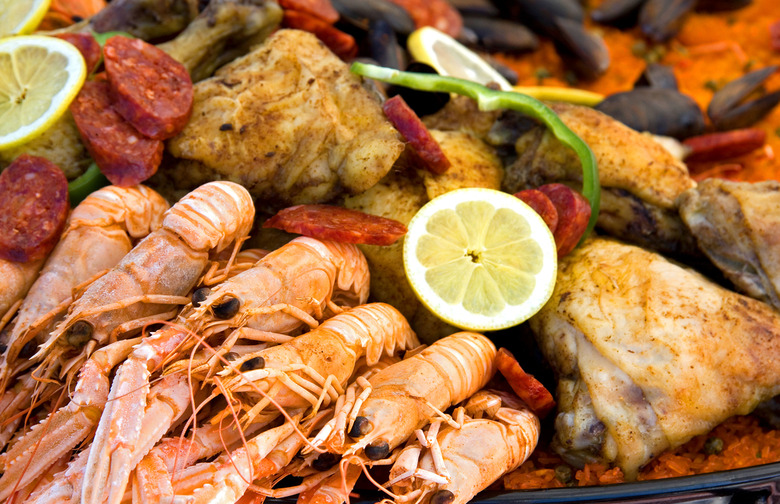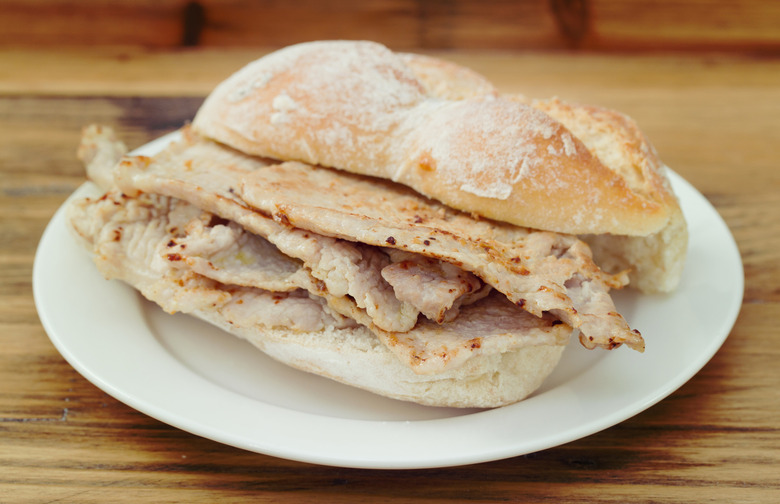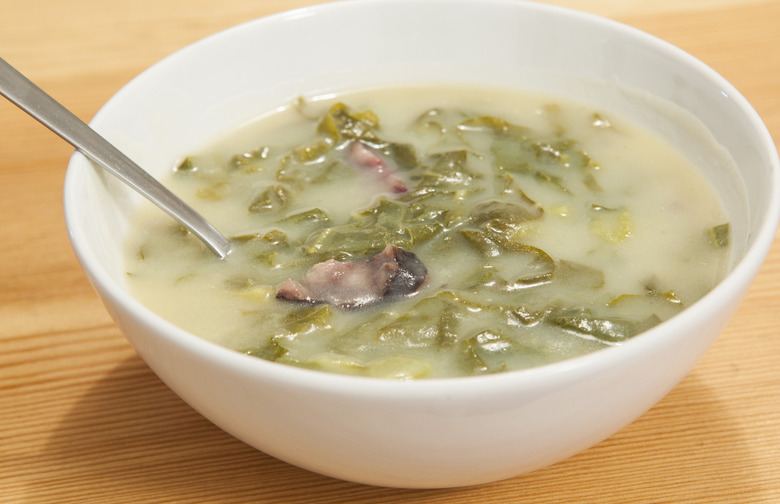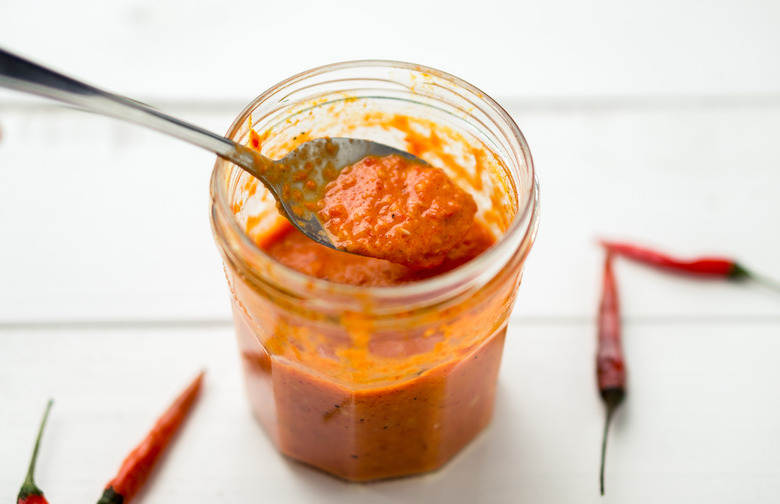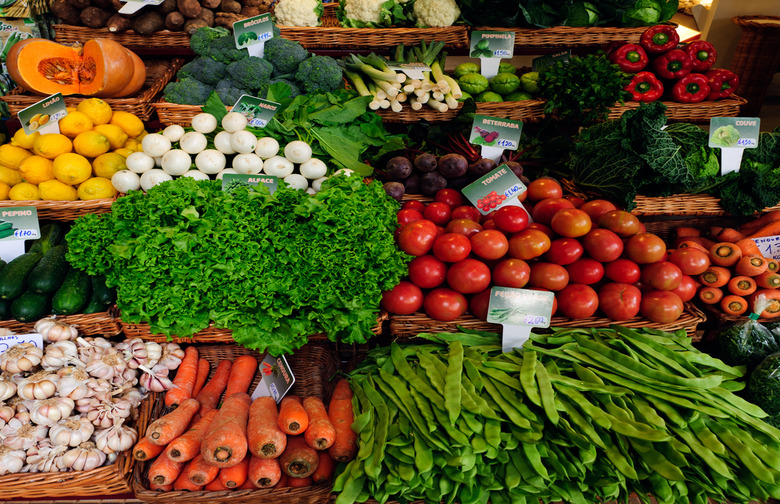The Taste Of Victory: What They Eat In Portugal That Makes Them The Best Soccer Players (Slideshow)
Bacalhau is more than just an iconic symbol of a nation whose fortunes were made plying the seas — it is the single most important dish in Portugal. There are enough variations to prepare the dried, salted cod fished in the cold waters off the coast of Norway that you could cook one every day of the year and never use the same recipe twice. Three of the most well-known examples are bacalhau à Gomes de Sá (salted cod, potatoes, onions, black olives, and hard-boiled eggs) from the city of Porto, bacalhau com natas (salted cod cooked with cream and onion), and bacalhau à brás (salted cod, potato, onion, and scrambled eggs) from Estremadura.
Looking for the best bacalhau recipes? We've got you covered.
Cataplana
Cataplana is both the name of various dishes and the pot in which the food is cooked. Despite its simple appearance, the cataplana revolutionized cooking by eliminating the heat and labor involved in cooking over an open flame or in a searing wood oven. Shaped like a round clam shell with a hinged lid, the cataplana was traditionally made of hammered copper but is now often made of non-stick metal. To use a cataplana, the food is placed in the bottom half of the pot, and once the lid is closed it seals in the steam, aromas, and cooking juices during simmering so that intense flavors develop and permeate all the ingredients. Although various foods can be prepared using the pot, Amêijoas na Cataplana is one of the most popular. This dish is a classic example of Portuguese inventiveness that combines baby clams, ham, chouriço, tomatoes, onions, and garlic in a liquid elixir that is heady from the moment you raise the lid of the cataplana.
Click here for an Amêijoas na Cataplana recipe you can try at home.
Desserts
There are so many delicious desserts in Portugal that it would be a shame to mention only one or two (but we also don't want to turn this into a list of the best desserts in Portugal... yet). Bakers in Portugal make more than 200 different types of pastries that can, for the most part, be traced to the arrival of the Moors. By the sixteenth and seventeenth centuries, convents were employing women and nuns to make sweets to help support their abbeys and charity work, and everything was sold from behind cloistered gates. Even today, many of the desserts still have names with religious connotations like toucinho do céu ("heaven's lard" or "bacon from heaven" — click here for a recipe) or barriga de freira ("nun's belly" — click for a recipe). Most popular are egg custards, cinnamon-laced treats, and desserts made with nuts and citrus. For a uniquely Portuguese experience, head to a pastelería or confeitaria to try a pastel de nata, one of the best egg custard tarts you will ever eat (recipe here).
Pork
It could be said that the Portuguese people's love of pork is so complete that they eat every part of the pig except the squeal (squeal-eating was banned centuries ago for being physically impossible). Pork can be found in everything from soups to grilled kebabs to desserts. This mad obsession is so prevalent countrywide that there are pig-killing festivals ("matança do porco") where every part of the pig is used in some dish. What can't be used is cured, preserved, and turned into hams ("presunto"), as in the fine, dry-cured hams from Lamego in the Douro Valley in northern Portugal. When pork is not cured, it's being served in dishes like roast suckling pig (click here for recipes), or as roasted pork with chestnuts (click here for recipes).
Sausage
Portuguese sausage, called enchido, is made in a dizzying amount of styles in every part of the country. It shows up in soups and stews, is grilled over an open flame, cooked in cataplana, or flamed tableside as a snack, adding rich and meaty flavors to any dish. It invariably includes pork (surprise!), and some of the popular varieties include linguiça, a seasoned pork sausage with onions, garlic, and pepper; chouriço, a spicy dried pork sausage made with paprika and garlic; smoked sausages like farinheira made from pork, wine, and flour; and morcela, a well-seasoned blood sausage that's best served fried or charcoal-grilled. A kosher kind, called alheira, is smoked and most often made with veal, chicken, duck, even balachau, and is traditionally fried in olive oil and served with boiled potatoes and vegetables.
Seafood
Portugal's dependence on the sea is evident in its cuisine, and certain regions such as Algarve and Estremadura are renowned for the diversity and quality of their catch, which is often sold right from the boat at the large Cascais fish market in Lisbon. The Portuguese cook hundreds of their favorite fish and seafood options in clean, light, tasty ways that include grilling it over charcoal, baking it, pan-frying it, roasting it in an oven, cooking it in a cataplana, or broiling it. Any time you are on the coastline, you can stop in any one of the many quaint seafood cafés that line the harbors, select a freshly caught fish or other kind of seafood from an iced display, and then tell your waiter how you want your meal cooked. The fish is priced based on weight, and some of the most popular offerings include mackerel, sardines, tuna, sea bass, octopus, squid, anchovies, swordfish, sweet Portuguese clams, crabs, oysters, mussels, and lobsters.
Snacks
Snacks in Portugal are called petiscos, from the verb petiscar, which means "to eat a little of this and that." There are taverns around Portugal that specialize in petiscos — with some focusing on only one regional specialty and others offering a range of selections — with the object being to socialize, nibble on tasty treats, and forget the worries of the day. Three popular petiscos are flaming chouriço (simply sliced chouriço set ablaze tableside with aguardiente), bifana (thinly-sliced, sautéed pork served on a crisp roll, called a papo seco, with a bit of mustard), and caracóis à portuguesa (sweet, tiny snails served in an herb- and garlic-infused broth).
Soups and Stews
There is an old Portuguese proverb that says, "Of soup and love, the first is the best." In Portugal, what doesn't go into soups is a shorter list than what does, and national soups like caldo verde and feijoada have sustained the Portuguese through feast and famine. Feijoada, which in Portuguese means "beans," is a stew made with beef or pork, where the beans play musical chairs based on the region. Our favorite? Feijoada à transmontana, which you can learn to make here. There's also a version made with white beans, rice, and sometimes chouriço and/or farinheira sausages, which is now one of Brazil's favorite national dishes.
Click here for some caldo verde recipes to whip up in the comfort of your own kitchen.
Spices and Condiments
If you want to know why Portuguese food is so different, just look at the diversity of its spice cabinet. From North Africa, the Moors introduced cinnamon, cumin, coriander, parsley, nutmeg, mint, and saffron for use in sauces, syrups, and desserts. Additionally, the mouth-searing-hot piri piri, bird's eye chili, really changed the way things are spiced in Portugal. It's been an essential ingredient in Portuguese food since coming over from central and southern Africa in the fourteenth century and is used in everything from the aforementioned soups and stews to being slathered on beef, pork, chicken, and shellfish. This beloved hot pepper is most often used as a thick condiment, which originated in Portugal, and has spread to Angola, Mozambique, and other parts of the world, like Goa, India (thanks, traders). In exchange, Goa sent back curry, which is now somewhat common in Portugal. While not the predominant flavor in many dishes, savvy cooks use it to add underlying depths of flavor and earthiness for nuance.
Bottle your very own piri piri hot sauce at home with this simple recipe.
Vegetables
Blessed with a Mediterranean climate, Portugal is a veritable garden where vegetables grow easily and come in every shape and color, including tomatoes (Portugal grows so many tomatoes that it's the largest exporter of tomato paste in the world), cabbage, eggplant, bell peppers, squash, cucumbers, lettuce... you get the picture. Salads are almost as popular as soups, but the mainstay is still a simple salad made with lettuce and tomato and tossed with vinaigrette containing exceptional Portuguese olive oil and vinegar. Vegetable side dishes are often creative and make use of what's in season and fresh, as in peas and eggs, called ervilhas com ovos (click here for a recipe). This fabulous combination of fresh peas cooked with ham has a just-fried egg added on top right before the plate is served. Other common dishes include salada de feijão frade (chickpeas cooked with onions, parsley, and ham tossed with vinegar — try this version with black-eyed peas) and favas à saloia (fava beans prepared with garlic sausage and lean bacon, often made in spring when the new, baby vegetables are most tender).
